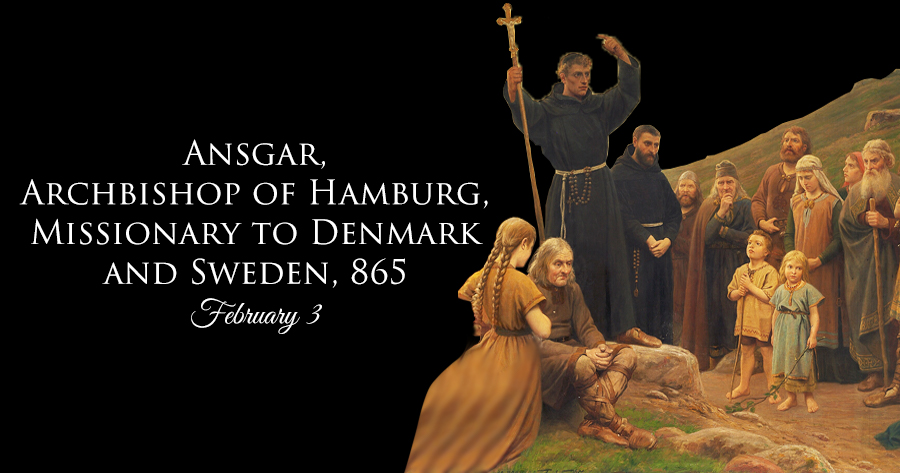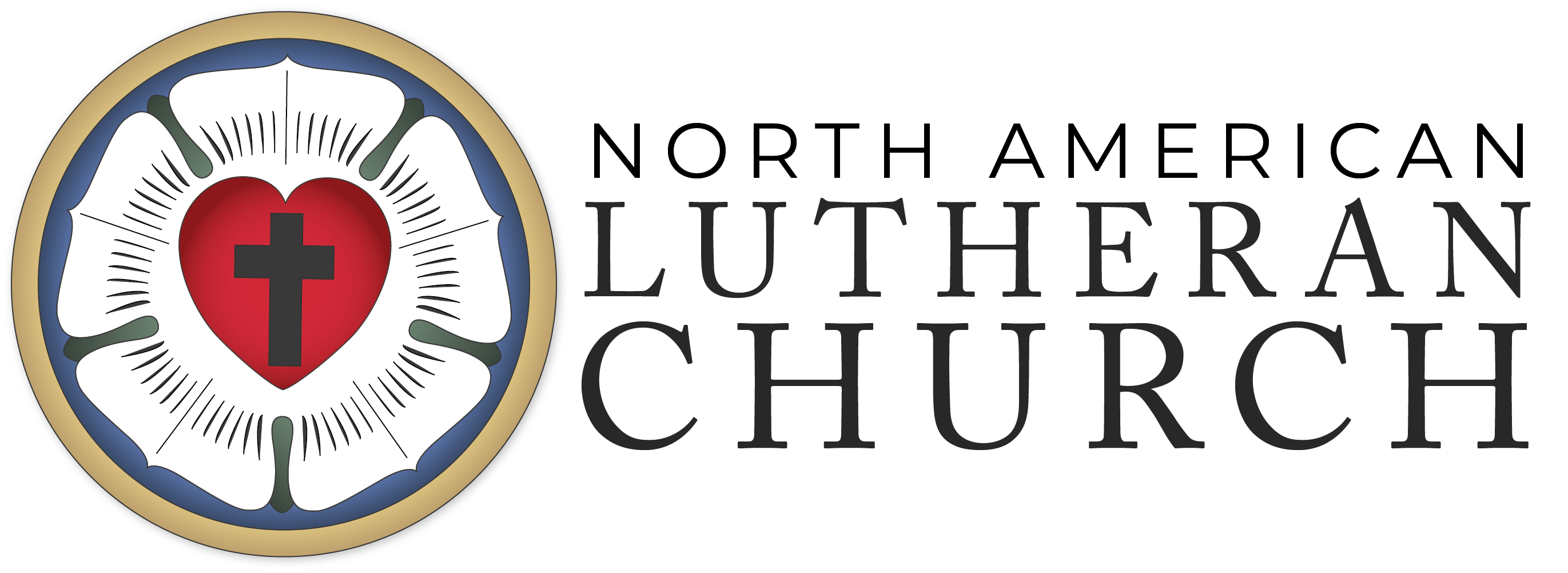
About the Commemoration
The Commemoration of Ansgar (or Anskar) encourages a long and patient view of Christian history. The immediate result of his devoted and perilous missionary work was slight: two churches established on the border of Denmark and one priest settled in Sweden. The rich harvest of conversion would not be gathered for three generations.
The Frankish missionary to Scandinavia, often called “the Apostle of the North,” was born in 801 near Amiens. He became a monk of the Benedictine monastery of Corbie nearby and later transferred to the monastery of New Corbie on the Weser River. He was a man of great personal piety, and he combined an eager desire to explore new lands with an unusual organizing ability.
At the beginning of the ninth century the Church was just starting its efforts to spread the gospel to Scandinavia, and the founding of the bishopric of Hamburg in 804 was one of the first important steps in this direction. The first actual missionary venture was in 826 and was connected with the attempt of the newly converted King Harald of Denmark to regain his throne. Harald was unsuccessful in his political aim, and Ansgar, who went along with him as a missionary, also met with little success, although he established contact with merchants and travelers from Scandinavia.
In the summer of 829, a group of merchants from the trading town of Birka in Sweden asked the emperor, Louis the Pious, to send a Christian mission, and again Ansgar was chosen. During the long trip northward, Ansgar and his companions were attacked by Viking pirates and robbed, arriving in Birka almost penniless. King Bjorn and the local authorities gave permission to preach the new faith and to establish a church. Most of the Christians there seem to have been slaves who had brought their faith with them, but a few Swedes were converted and baptized. Among them was the king’s bailiff in Birka, who at his own expense built a church, the first Christian church in all of Scandinavia. After a year and a half of work, Ansgar returned home.
In 831 Ansgar was appointed Abbot of Corbie and Archbishop of Hamburg, with the idea that this would be the base for missionary operations in Scandinavia as opportunities arose. For the next thirteen years Ansgar preached and organized missions in northern Germany and Scandinavia. He participated in the consecration of Gotbert, the first bishop for Sweden. In 845, however, the Vikings destroyed the city of Hamburg by fire, and Sweden and Denmark relapsed into paganism. In 848 Ansgar was made archbishop of the combined sees of Bremen and Hamburg, and he began the restoration of his missions in Denmark. His patient work led to small success, but after his death on February 3,865, in Bremen, practically all that he had accomplished in Scandinavia was lost, and three centuries passed before Christianization really resumed.
St. Ansgar was a prophetic figure, and the church in Scandinavia honors his memory. He is often portrayed with a fur collar on his bishop’s vestments, holding a church in his hand. He is respected by Scandinavian Lutherans, especially the Danes, and numerous churches, societies, and educational institutions are dedicated to his memory. There are about a dozen Lutheran churches in North America named for him.
Excerpts from New Book of Festivals & Commemorations: A Proposed Common Calendar of Saints by Philip H. Pfatteicher, copyright, 2008 by Fortress Press, an imprint of Augsburg Fortress.
See also: Ansgar
Reading
From The Imitation of Christ by Thomas à Kempis
When God bestows spiritual comfort, receive it with a grateful heart; but remember that it comes from God’s free gift, and not of your own merit. Do not be proud, nor over joyful, nor foolishly presumptuous; rather, be the more for this gift, more cautious, and more prudent in all your doings, for this hour will pass, and temptation will follow it. When comfort is withdrawn, do not immediately despair, but humbly and patiently await the will of Heaven; for God is able to restore to you a consolation even richer than before. This is nothing new or strange to those who know the ways of God, for the great Saints and Prophets of old often experienced these changes.
I have never found anyone, however religious and devout, who did not sometimes experience a withdrawal of grace, or feel a lessening of devotion. And no Saint ever lived, however highly rapt and enlightened, who did not suffer temptation sooner or later. For he is not worthy of high contemplation who has not suffered some trials for God’s sake. Indeed, the temptation that precedes is often a sign of comfort to follow. For heavenly comfort is promised to those who have been tried and tempted. “To him who overcomes,” says God, “I will give to eat of the Tree of Life.”
Thomas à Kempis, The Imitation of Christ, trans. Leo Sherley-Price (Baltimore: Penguin, 1952), 68-69, 88-89, 83, 206-206, 72. Introduction and Translation copyright 1952 by Leo Sherley-Price. Reprinted by permission of Penguin Books Ltd.
Propers
Almighty and everlasting God, you sent your servant Anskar as an apostle to the people of Scandinavia, and enabled him to lay a firm foundation for their conversion, though he did not see the results of his labors: Keep your Church from discouragement in the day of small things, knowing that when you have begun a good work you will bring it to a fruitful conclusion; through Jesus Christ our Lord, who lives and reigns with you and the Holy Spirit, one God, forever and ever.
CMG, LFF
Readings: Isaiah 62:1-7; Psalm 96:1-7 or 98:1-4; Acts 1:1-9; Mark 6:7-13
Hymn of the Day: “O Christ our light, O Radiance true” (LBW 380, LSB 839, ELW 675)
Prayers: For courage and resolution in the face of defeat; For the church in Sweden; For the church in Denmark.
Preface: Epiphany (LBW, ELW), Apostles (BCP)
Color: White
Also on February 3
In addition to Ansgar, the Roman Catholic General Calendar also commemorates on this date St. Blaise (Blasius), who according to a late and historically dubious legend was bishop of Sebaste in Armenia, where he was martyred early in the fourth century. Because of the story that he miraculously saved a young child who was choking on a fish-bone, he became extraordinarily popular, especially in Germany, and his feast day was observed with the blessing of throats. The blessing is still done, especially in many Roman Catholic churches.
The Eastern Church on this day following the Presentation of Our Lord in the Temple commemorates Righteous Simeon and Anna the Prophetess. All we know of them is given in Luke 2:33-38.
